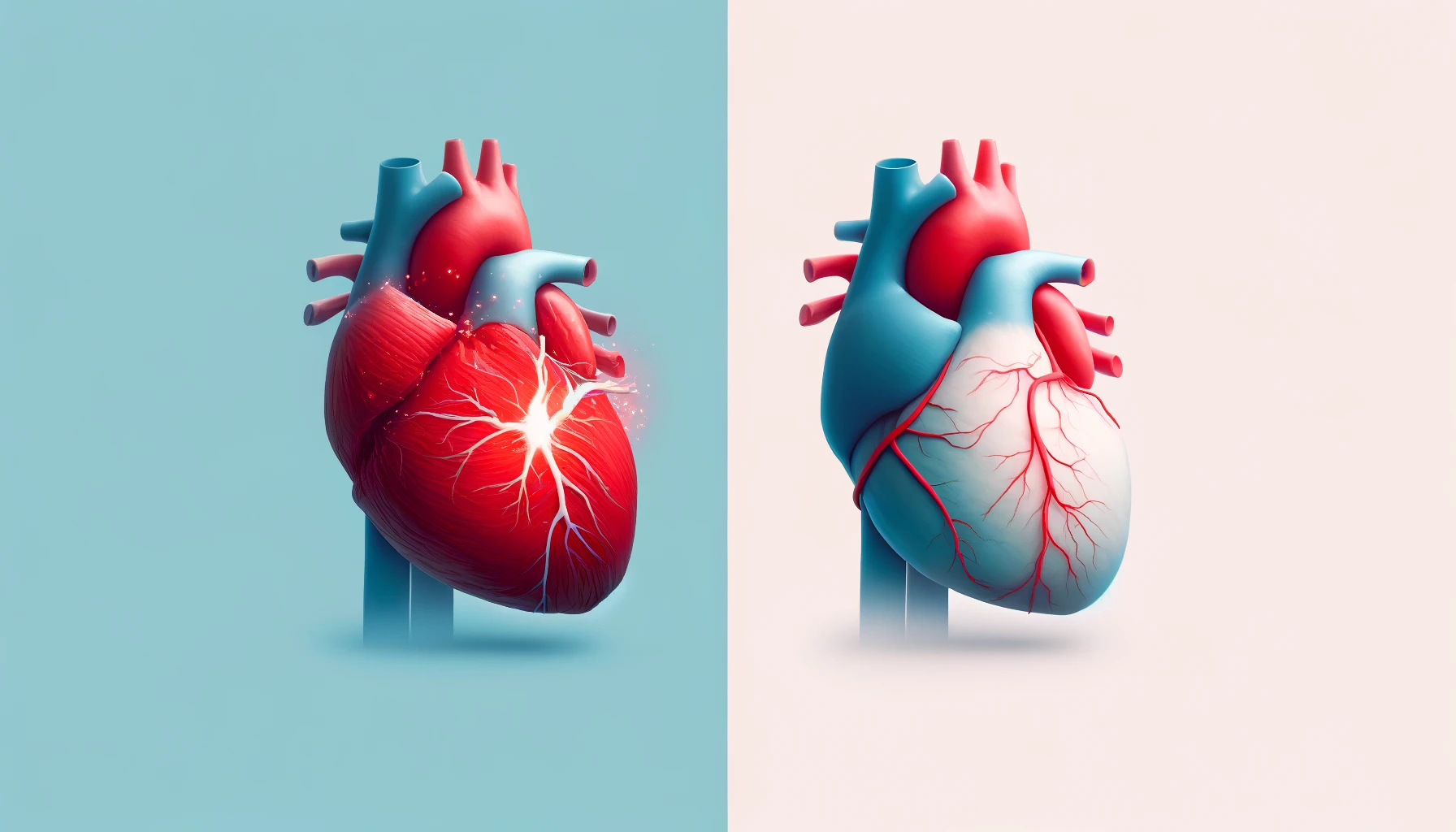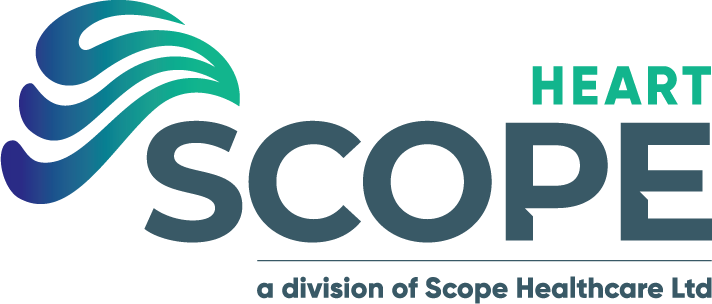
Heart-related conditions are among the leading health concerns worldwide, affecting millions of individuals each year. Understanding the differences between angina and a heart attack is crucial, not only because both can signify underlying heart disease but also because their treatments differ significantly. This article aims to demystify these two conditions, helping you recognize their symptoms and understand why timely and appropriate medical response is essential.
What is Angina?
Angina, often referred to as angina pectoris, is a type of chest pain caused by reduced blood flow to the heart muscles. It’s not a disease itself but rather a symptom of coronary artery disease. Angina is typically described as a squeezing, pressure, heaviness, tightness, or pain in your chest. It can sometimes feel like indigestion or heartburn.
Angina is classified into three types:
- Stable Angina: The most common type, predictable and occurring during physical exertion or stress. Relieved by rest or medication.
- Unstable Angina: More serious and less predictable than stable angina, often occurring at rest, and can be a precursor to a heart attack.
- Variant (Prinzmetal’s) Angina: Occurs at rest due to a spasm in a coronary artery and usually happens overnight.
What is a Heart Attack?
A heart attack, also known as myocardial infarction, happens when the flow of oxygen-rich blood to a section of heart muscle suddenly becomes blocked, and the heart can’t get oxygen. If not promptly treated, the affected heart tissue will begin to die.
Symptoms of a heart attack may include intense chest pain, discomfort in other areas of the upper body, shortness of breath, cold sweat, nausea, or light-headedness. Unlike angina, the symptoms of a heart attack are not relieved by rest or nitroglycerin.
Comparing Angina and Heart Attack
Understanding the differences between angina and a heart attack can help you react appropriately in a critical situation.
- Differences in Symptoms: While both conditions can cause chest discomfort, angina is usually triggered by physical exertion and relieved by rest or medication. In contrast, heart attack pain is more intense, can occur at rest, and will not improve with rest or angina medication.
- Differences in Causes: Angina is generally caused by temporary decreases in blood flow to the heart, whereas a heart attack occurs due to a permanent blockage in the coronary artery leading to significant damage to the heart muscle.
- Differences in Duration and Onset: Angina pain typically lasts a short time (a few minutes) and is more predictable. Heart attack symptoms can last longer and occur suddenly, and they often include a broader set of symptoms such as nausea, extreme fatigue, and a cold sweat.
Why Distinguishing Them is Important
Recognizing whether you’re experiencing angina or a heart attack is vital because the treatments differ markedly and the urgency of the situations are not the same.
- Risks Associated with Each Condition: While stable angina isn’t immediately life-threatening and can often be managed with lifestyle changes and medication, a heart attack requires immediate emergency medical treatment to preserve heart muscle.
- Importance of Correct Diagnosis and Treatment: Effective management of either condition hinges on correct diagnosis. Delayed treatment for a heart attack can be fatal or lead to severe heart damage.
What to Do If You Experience Symptoms
- Immediate Steps to Take for Angina: If you believe you are having angina and you have been diagnosed with it before, follow your prescribed treatment plan, typically involving rest and nitroglycerin. If symptoms do not improve within a few minutes, call emergency services (dial 000).
- Immediate Steps to Take for a Heart Attack: If you suspect a heart attack, call emergency services immediately (dial 000). Every minute matters, and getting to the hospital quickly can mean the difference between recovery and much more severe outcomes.
- When to Seek Medical Help: Always seek immediate medical help if you experience severe chest pain, especially if it’s accompanied by other symptoms like shortness of breath, sweating, nausea, or fainting.
Prevention Tips
Maintaining heart health and preventing conditions like angina and heart attacks involves lifestyle changes and regular medical checkups. Here are some effective strategies:
Lifestyle Changes
- Diet: Eat a heart-healthy diet rich in fruits, vegetables, whole grains, and lean proteins. Limit intake of fats, salt, and sugar.
- Exercise: Regular physical activity can strengthen your heart and improve blood circulation. Aim for at least 150 minutes of moderate-intensity aerobic exercise each week.
- Quit Smoking: Smoking is a major risk factor for heart disease. Quitting smoking can dramatically reduce your risk of a heart attack and improve overall cardiovascular health.
- Manage Stress: Chronic stress can contribute to heart disease. Find healthy ways to manage stress, such as yoga, meditation, or hobbies that relax you.
Importance of Regular Check-Ups
Regular visits to your healthcare provider can help catch and manage risk factors like high blood pressure, high cholesterol, and diabetes before they cause serious problems.
Living with Atrial Fibrillation
Living with AFib requires adjustments, but with the right approach, individuals can lead fulfilling lives. Monitoring the condition, adhering to treatment plans, and making healthy lifestyle choices are key components.
Daily life adjustments
Managing AFib involves regular monitoring of your condition, adhering to prescribed treatments, and being aware of how your lifestyle choices affect your heart health. Regular check-ups with your healthcare provider are essential to track the condition’s progression and adjust treatments as needed.
Monitoring and managing the condition
Patients may need to monitor their heart rate and rhythm, keep track of symptoms, and recognize when to seek medical advice. Self-care measures, combined with professional medical treatment, are vital for managing AFib effectively.
Support and resources
Finding support through patient groups, counselling, or education programs can be incredibly beneficial. Resources like the Australian Heart Foundation provide valuable information and community support for individuals living with AFib.
Conclusion
Understanding the difference between angina and a heart attack is crucial for effectively managing these conditions. Angina, while serious, can often be controlled with lifestyle changes and medication, but it serves as a warning sign of underlying heart disease. A heart attack, on the other hand, is a medical emergency that requires immediate intervention.
By staying informed about the symptoms and differences between these conditions, you can take proactive steps towards protecting your heart health. Remember, if you experience any severe or unusual chest pain, especially with other symptoms like shortness of breath, dizziness, or nausea, seek medical attention immediately (dial 000). Being proactive and vigilant is your best defense against heart disease.

